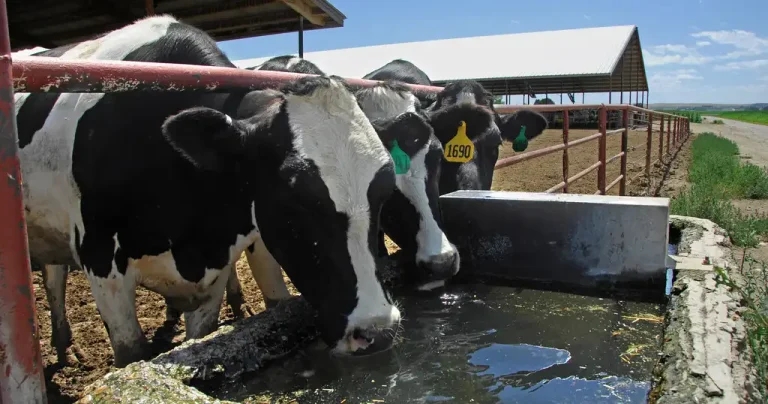11 Aug 2025
The vet-designed system, which uses chlorine dioxide to eliminate microbes in the water, is now being rolled out into the dairy industry

The Devon-based company said a 12-month trial at one Somerset farm reported that mastitis levels fell by 37 per cent, as well as an 81 per cent reduction in overall bactoscan levels.
Speaking during a webinar late last month, farm vet Phil Elkins said questions about the system’s impact in breakdown situations were an area of interest, as he argued it offered farmers another means of “controlling the controllables”.
He said: “It’s something that can be done with no negative effects to potentially help reduce that risk of bTB spread.
“We’re not going to come out and say that you won’t have TB on your farm if you put the FarmWater system in place. But it does kill the active pathogen and, as a result, empirically, it should reduce the risk.”
Mr Elkins, a former BCVA board and BVA council member, said the system offered “a real opportunity to improve animal welfare, health and productivity on a large scale”.
Its potential importance was further emphasised within hours when Mr Clarkson revealed his Diddly Squat farm in Oxfordshire had been struck by the disease.
Writing on X, formerly Twitter, the former Top Gear host said everyone at the farm was devastated by the outbreak, before later hitting back at media reports suggesting the entire farm had been shut down as a result.
The incident has focused renewed attention on the fight against bTB – particularly the long-running, often contentious, scientific dispute over the role of badger culling in reducing disease levels.
Nearly a year has now passed since the Government signalled its intention to end the current cull programme within this Parliament, as part of a new strategy to tackle the disease.
But while it expressed sympathy for Mr Clarkson’s situation, the AHDB insisted in a social media response that current efforts to combat the disease were working.
However, the anti-cull Badger Trust claimed his previously recorded remarks about shooting badgers on his land indicated the mammals could not be blamed for the latest outbreak.
Questions about how hygiene practices could influence bTB’s spread were also raised last summer when a BBC documentary featuring the Queen guitarist Sir Brian May included research suggesting the presence of the Mycobacterium bovis bacterium in cattle faeces could enable its transmission via contaminated feed and water.
At the time, the BCVA cast doubt over the claims amid its broader criticisms of a programme it described as “misleading”.
But FarmWater’s Ben South, a poultry vet, argued that ensuring clean water supplies had to be part of measures to control bTB, too.
He added: “I don’t see why people aren’t looking at it more and doing something about it.”